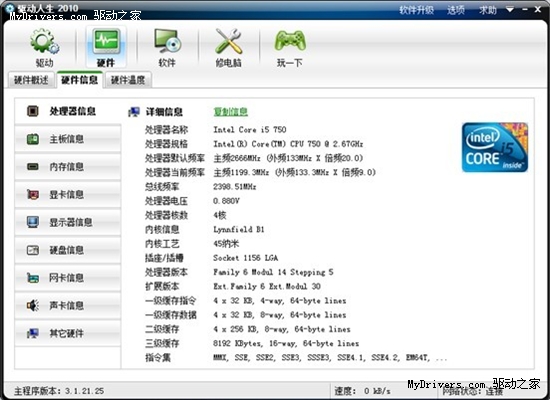源碼位置:/ext/date/php_date.c
/* {{{ proto int strtotime(string time [, int now ])
Convert string representation of date and time to a timestamp */
PHP_FUNCTION(strtotime)
{
char *times, *initial_ts;
int time_len, error1, error2;
struct timelib_error_container *error;
long preset_ts = 0, ts;
timelib_time *t, *now;
timelib_tzinfo *tzi;
tzi = get_timezone_info(TSRMLS_C);
if (zend_parse_parameters_ex(ZEND_PARSE_PARAMS_QUIET, ZEND_NUM_ARGS() TSRMLS_CC, “sl”, ×, &time_len, &preset_ts) != FAILURE) {
/* We have an initial timestamp */
now = timelib_time_ctor();
initial_ts = emalloc(25);
snprintf(initial_ts, 24, “@%ld UTC”, preset_ts);
t = timelib_strtotime(initial_ts, strlen(initial_ts), NULL, DATE_TIMEZONEDB, php_date_parse_tzfile_wrapper); /* we ignore the error here, as this should never fail */
timelib_update_ts(t, tzi);
now->tz_info = tzi;
now->zone_type = TIMELIB_ZONETYPE_ID;
timelib_unixtime2local(now, t->sse);
timelib_time_dtor(t);
efree(initial_ts);
} else if (zend_parse_parameters(ZEND_NUM_ARGS() TSRMLS_CC, “s|l”, ×, &time_len, &preset_ts) != FAILURE) {
/* We have no initial timestamp */
now = timelib_time_ctor();
now->tz_info = tzi;
now->zone_type = TIMELIB_ZONETYPE_ID;
timelib_unixtime2local(now, (timelib_sll) time(NULL));
} else {
RETURN_FALSE;
}
if (!time_len) {
timelib_time_dtor(now);
RETURN_FALSE;
}
t = timelib_strtotime(times, time_len, &error, DATE_TIMEZONEDB, php_date_parse_tzfile_wrapper);
error1 = error->error_count;
timelib_error_container_dtor(error);
timelib_fill_holes(t, now, TIMELIB_NO_CLONE);
timelib_update_ts(t, tzi);
ts = timelib_date_to_int(t, &error2);
timelib_time_dtor(now);
timelib_time_dtor(t);
if (error1 || error2) {
RETURN_FALSE;
} else {
RETURN_LONG(ts);
}
}
/* }}} */
strtotime函數(shù)在使用strtotime(“-1 month”)求上一個月的今天時會出一些狀況,
因此也引出寫這篇文章,本文包括如下內(nèi)容:
1).strtotime函數(shù)的一些用法
2).strtotime函數(shù)的實(shí)現(xiàn)基本原理
3).strtotime(“-1 month”)求值失敗的原因
strtotime函數(shù)的一些用法
1、 strtotime(“JAN”)和strtotime(“January”)
這兩個用法的效果是一樣的,都是返回指定月份的今天,如果指定月份沒有今天,則順延到下一個月。 如在2011-03-31計(jì)算二月,代碼:
echo date("Y-m-d H:i:s", strtotime("feb", strtotime("2011-03-31")));
程序會輸出: 2011-03-03 00:00:00。 從表象來看,這個結(jié)果也許不一定是我們想要的,但是這也算是一種解決方案,這種方案是由什么決定的呢? strtotime函數(shù)在執(zhí)行月份的計(jì)算時只計(jì)算了月份,相當(dāng)于直接將月份設(shè)置為指定的月份的值,而如jan,january都會有一個對應(yīng)內(nèi)部數(shù)值。
2、 first關(guān)鍵字
first是一個輔助型的關(guān)鍵字,它可以與星期,天等可以指定確認(rèn)值的關(guān)鍵字組合使用,如求2011年的第一個星期天:
echo date("Y-m-d H:i:s", strtotime("second sunday", strtotime("2011-01-01"))), "<br />";
在PHP的源碼中,對于first與星期和天的組合使用是分開的,即first day對應(yīng)一個處理操作, 在最終的C實(shí)現(xiàn)中,天的值指定為1,即time結(jié)構(gòu)中的d字段指定為1,如下代碼:
switch (time->relative.first_last_day_of) {
case 1: /* first */
time->d = 1;
break;
case 2: /* last */
time->d = 0;
time->m++;
break;
}
3、previous和next關(guān)鍵字
與first類似,previous關(guān)鍵字可以與星期,天組合使用,表示指定時間的前一個星期幾或前一天。如下所示代碼:
echo date("Y-m-d H:i:s", strtotime("previous sunday", strtotime("2011-02-01"))), "<br />";
程序會輸出:2011-01-30 00:00:00
程序求2011-02-01的前一個星期天。
next關(guān)鍵字與previous相反,它表示下一個星期幾或后一天。
4、 last關(guān)鍵字
last關(guān)鍵字既可以作為上一個,也可以作為最后一個。如求上一個星期天的日期:
echo date("Y-m-d H:i:s", strtotime("last sunday", strtotime("2011-02-05"))), "<br />";
程序會輸出: 2011-01-30 00:00:00
當(dāng)程序作為最后時,其應(yīng)用場景是指定日期所在月的最后一天,相當(dāng)于date(“t”)的結(jié)果。如求2000年2月的最后一天:
echo date("Y-m-d H:i:s", strtotime("last day", strtotime("2000-02-01"))), "<br />";
first、previous、last和this關(guān)鍵字在re文件中屬于同一組。
5、 back和front關(guān)鍵字
這兩個關(guān)鍵字是對一天中的小時的向前和向后操作,其調(diào)用格式如下:
echo date("Y-m-d H:i:s", strtotime("back of 24", strtotime("2011-02-01"))), "<br />";
echo date("Y-m-d H:i:s", strtotime("front of 24", strtotime("2011-02-01"))), "<br />";
back表示將時間設(shè)置指定小時值的后一個小時的15分的位置。如果是24點(diǎn),則算到第二天的0點(diǎn)15分。
front表示將時間設(shè)置指定小時值的前一個小時的45分的位置。如果是0點(diǎn),則算前一天的23點(diǎn)45分。
上面的代碼輸出:2011-02-02 00:15:00 2011-02-01 23:45:00。 其中back of和front of后接的數(shù)組必須大于等于0并且小于等于24。
strtotime函數(shù)的實(shí)現(xiàn)基本原理
官方文檔對于strtotime函數(shù)的說明是這樣的:本函數(shù)預(yù)期接受一個包含美國英語日期格式的字符串并嘗試將其解析為 Unix 時間戳 (自 January 1 1970 00:00:00 GMT 起的秒數(shù)),其值相對于 now 參數(shù)給出的時間,如果沒有提供此參數(shù)則用系統(tǒng)當(dāng)前時間。
這是一個標(biāo)準(zhǔn)PHP內(nèi)置函數(shù),從PHP4起就已經(jīng)存在。strtotime函數(shù)是以一個擴(kuò)展的方式加載進(jìn)來的,在ext/date目錄下有其全部實(shí)現(xiàn)。 作為一個標(biāo)準(zhǔn)的內(nèi)置函數(shù),其定義格式也是標(biāo)準(zhǔn)的,如下:
PHP_FUNCTION(strtotime)
// 處理輸入,對于是否有第二個參數(shù)有沒的處理
// 調(diào)用相關(guān)函數(shù),實(shí)現(xiàn)字符串的解析和結(jié)果計(jì)算
// 返回結(jié)果
}
在輸入處理中,先識別兩個參數(shù)都存在的情況并進(jìn)行處理,如果不是此種狀態(tài),則處理第二個參數(shù)不存在的情況, 如果都沒有,則報(bào)錯,返回FALSE。
strtotime函數(shù)的第一個參數(shù)是一個字符串,對于這個字符串,由于其復(fù)雜性,PHP使用了其詞法解析一樣的工具:re2c。在/ext/date/lib目錄下,從parse_date.re文件我們可以看到其原始的re文件。 當(dāng)用戶以參數(shù)的形式傳入一個字符串,此字符串將交給此程序處理,針對其字符串的不同,匹配不同的處理函數(shù)。 如strtotime(“yesterday”)調(diào)用,分析字符串時,將匹配yesterday字符串,此字符串對應(yīng)函數(shù)如下:
'yesterday'
{
DEBUG_OUTPUT("yesterday");
TIMELIB_INIT;
TIMELIB_HAVE_RELATIVE();
TIMELIB_UNHAVE_TIME();
s->time->relative.d = -1;
TIMELIB_DEINIT;
return TIMELIB_RELATIVE;
}
這里有幾個關(guān)鍵的結(jié)構(gòu)體:
typedef struct Scanner {
int fd;
uchar *lim, *str, *ptr, *cur, *tok, *pos;
unsigned int line, len;
struct timelib_error_container *errors;
struct timelib_time *time;
const timelib_tzdb *tzdb;
} Scanner;
typedef struct timelib_time {
timelib_sll y, m, d; /* Year, Month, Day */
timelib_sll h, i, s; /* Hour, mInute, Second */
double f; /* Fraction */
int z; /* GMT offset in minutes */
char *tz_abbr; /* Timezone abbreviation (display only) */
timelib_tzinfo *tz_info; /* Timezone structure */
signed int dst; /* Flag if we were parsing a DST zone */
timelib_rel_time relative;
timelib_sll sse; /* Seconds since epoch */
unsigned int have_time, have_date, have_zone, have_relative, have_weeknr_day;
unsigned int sse_uptodate; /* !0 if the sse member is up to date with the date/time members */
unsigned int tim_uptodate; /* !0 if the date/time members are up to date with the sse member */
unsigned int is_localtime; /* 1 if the current struct represents localtime, 0 if it is in GMT */
unsigned int zone_type; /* 1 time offset,
* 3 TimeZone identifier,
* 2 TimeZone abbreviation */
} timelib_time;
typedef struct timelib_rel_time {
timelib_sll y, m, d; /* Years, Months and Days */
timelib_sll h, i, s; /* Hours, mInutes and Seconds */
int weekday; /* Stores the day in 'next monday' */
int weekday_behavior; /* 0: the current day should *not* be counted when advancing forwards; 1: the current day *should* be counted */
int first_last_day_of;
int invert; /* Whether the difference should be inverted */
timelib_sll days; /* Contains the number of *days*, instead of Y-M-D differences */
timelib_special special;
unsigned int have_weekday_relative, have_special_relative;
} timelib_rel_time;
s->time->relative.d = -1;所表示的意思是當(dāng)前時間的相對天數(shù)是-1。 這只是中間詞法解析的中間結(jié)果,但是最后結(jié)果是通過這些中間結(jié)果計(jì)算出來的。
strtotime(“-1 month”)求值失敗的原因
雖然strtotime(“-1 month”)這種方法對于后一個月比前一個月的天數(shù)的情況會求值失敗,但是從其本質(zhì)上來說,這并沒有錯。 PHP這樣實(shí)現(xiàn)也無可厚非。只是我們的需求決定了我們不能使用這種方法,因此我們稱其為求值失敗。
我們來看它的實(shí)現(xiàn)過程,由于沒有第二個參數(shù),所以程序使用默認(rèn)的當(dāng)前時間。 第一個參數(shù)傳入的是-1 month字符串,這個字符串所對應(yīng)的re文件中的正則為:
reltextunit = (('sec'|'second'|'min'|'minute'|'hour'|'day'|'fortnight'|'forthnight'|'month'|'year') 's'?) | 'weeks' | daytext;
relnumber = ([+-]*[ /t]*[0-9]+);
relative = relnumber space? (reltextunit | 'week' );
最終relative會對應(yīng)一系列操作,程序會識別出前面的-1 和后面的month字符串,month對應(yīng)一種操作類型:TIMELIB_MONTH。 在此之后,根據(jù)識別出來的數(shù)字和操作類型執(zhí)行操作,如下代碼:
case TIMELIB_MONTH: s->time->relative.m += amount * relunit->multiplier; break;
如上代碼,則是直接記錄月份的相對值減一。 但是對于類似于3月31號這樣的情況,2月沒有31號,程序會自動將日期計(jì)算到下一個月。

















